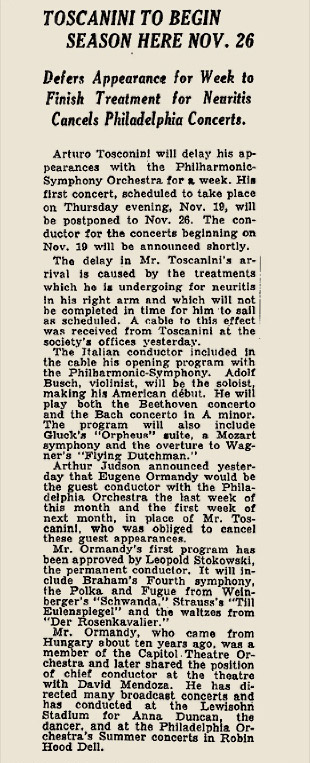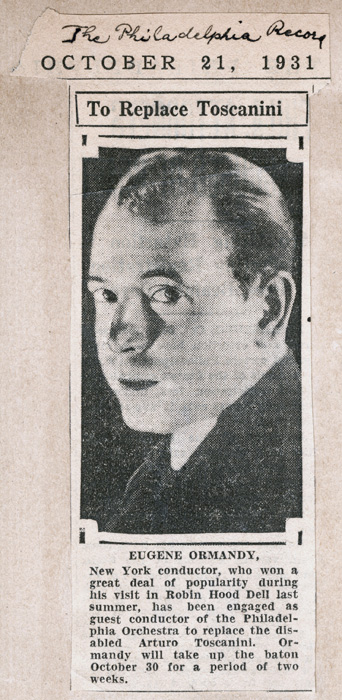In fall 1931, Arturo Toscanini was forced to cancel a two-week engagement with the Philadelphia Orchestra because of a joint ailment. Judson contacted a number of prominent conductors to fill in for Toscanini, but according to a 1969 interview with Ormandy, "They were to follow Leopold Stokowski and replace Toscanini. You could not be in a worse position, and they were not going to take that chance." Although Ormandy had conducted both the New York Philharmonic and the Philadelphia Orchestra, he was still best known for his weekly performances on CBS radio. As Ormandy put it, he was a "radio conductor." "I had nothing to lose and everything to gain, . . . even though my manager [Judson] said, 'If you listen to me, I wouldn't do it, but you are the only one left, and here's your chance if you want it.' . . . Luckily, in three days' time I had to prepare a program that Stokowski made me learn." Since he was still relatively untested, Judson engaged him for only the first week.
For his first concert, Ormandy conducted the Brahms Symphony no. 4, Richard Strauss's Till Eulenspiegels lustige Streiche and Rosenkavalier Suite, and the "Polka and Fugue" from Jaromír Weinberger's operetta Schwanda the Bagpiper, "a new work not previously heard in regular concerts of the Orchestra." During the intermission of the first concert, Judson, pleased by what he had heard and reassured by the audience's enthusiastic reception, invited Ormandy to continue with the orchestra through what would have been Toscanini's second week. At the end of this second week, a review published in the 8 November 1931 Philadelphia Record bore the headline, "Will Phila. Jilt the Stokowski for Ormandy?"

